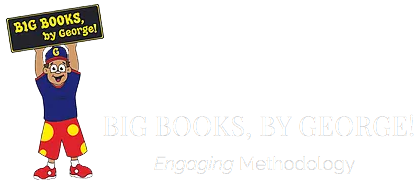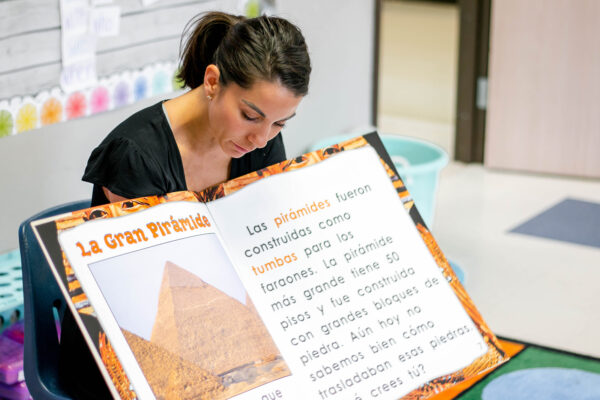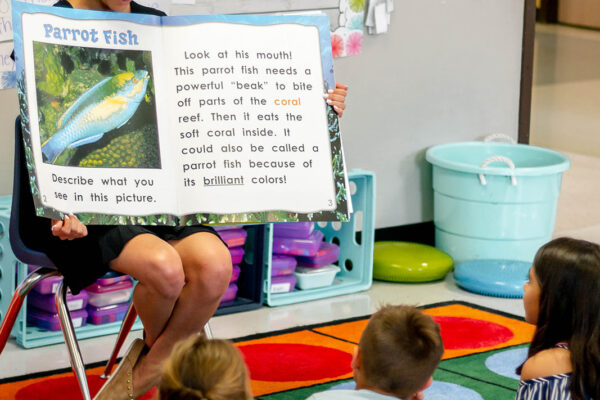“Wonder is the seed of knowledge” – Francis Bacon
The Wonder Approach to Learning
Imagine a tiny little seed in a dark, damp hole in the soil. All it needs is some water and sunlight, and a process begins. Its potential could be huge! It could become a gigantic oak tree. Or it could become a beautiful, delicate flower. But, for it to be anything, it first must exist, and it absolutely needs the water and sunlight in soil. It cannot turn into anything if it were to, say, sit in a plastic cup in the back of your closet.
Knowledge is the effect and the product of a lot of different encounters that people have. All human beings retain knowledge of something in one way or another. But for knowledge to truly thrive and build upon itself, there must be the element of wonder.
Why? Why must we wonder in order to know things? Aristotle says that “all men by nature desire to know”. The Wonder Approach has a few explanations in regards to how wonder triggers learning, knowing, and the desire to know more. Basically, the desire to learn comes from within, and is not only confined to what the environment offers. This is in striking contrast to what’s known as the Behaviorist Approach, that argues that a child’s responses are directly indicative of their external environment. While there may be some truth to the fact that a child’s classroom influences their learning, the Wonder Approach contends that the majority of a child’s learning is triggered from within.
Wonder and Knowledge-Based instruction for English Learners
When it comes to language acquisition, this is nothing new to seasoned educators. Content-based instruction feeds off this idea- that a child can learn a new language and new information in that language at the same time. In fact, it’s wonderful if that is achievable. In the book The Knowledge Gap, Natalie Wexler touches on a similar feature or literacy- that is, children learn well when the search for new knowledge is at its core.
Stephen Krashen, author of Principles and Practice in Second Language Acquisition theorizes on this same vein. He argues that “the best input is so interesting and relevant that the acquirer may even ‘forget’ that the message is encoded in a foreign language.” How true this is! Think of your English Learners. True fluency begins to blossom when they don’t realize they are speaking or reading in a second language. In fact, the message is so good, beautiful, or fascinating, that it is more imperative to communicate it rather than to determine how to communicate it.
Instead of desperately teaching phonics to improve literacy down the road for English Learners, these experts contend that teaching new information with rich and exciting content will do some of the job for you. Phonics is just a spring board to consume and retain desirable information. Timothy Shanahan, in an interview with Edutopia, discusses ‘thin’ phonics and literacy. He makes the point that , just because phonics is being discussed and regurgitated doesn’t necessarily mean it’s going to make a difference. It must have a purpose. And for English Learners in particular, it is much more helpful to teach the information first in their native language to present context, and then to enhance knowledge and literacy instruction in the content area in the second language.
The Wonder Approach, according to Francis Bacon, Aristotle, Thomas Aquinas, and many others, is that the desire to know awakens the philosopher in all of this. Facts and opinions, conjectures and conclusions, will be sorted in the mind of each learner until it makes sense. So what will be the sunlight and soil to each of those little seeds waiting to sprout with their own unique understanding of the world?
One simple way is to teach things with rich content. Communicate things in each area that is attractive, novel, and true. Children are naturally ripe with wonder already. Their entire world is increasing with new pieces of information everyday. Going the extra mile with fun facts or areas of healthy controversy can propel the student further than any statistic can tell you. This can be through project-based learning, through supplemental texts, or engaging in a new way in the classroom.
The hardest part is to trust the process. It will take up precious minutes in the classroom- time that could be spent drilling phonics. BUT the wonder approach, and the desire of knowledge could be exactly what makes the phonics click and be utilized for fluency – all in a much richer way, and a way that convinces each student that learning a new language is enjoyable and exactly what their sense of wonder was looking for.




